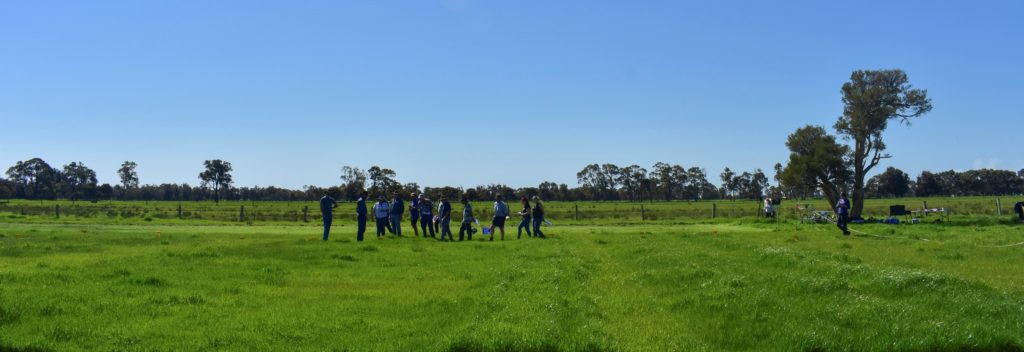More than 140 farmers, industry representatives and researchers gathered together across the greater south west in recent months to experience the results of phosphorus fertiliser trials.
The field days (which ran from the Peel Harvey Catchment in the north, to Oyster Harbour Catchment in the south) form part of the four-year uPtake project – an initiative to improve nutrient use efficiency on grazing farms in south west WA.

“The field days were a great opportunity to raise awareness of uPtake and showcase early results,” Project Coordinator Rob McFerran said.
“Farmers were especially interested in the new technology being trialled in the pasture reader and use of drone technology to assess pasture productivity measurements.”
The Oyster Harbour field day ran across three different properties, two of which had higher soil phosphorus fertility and one which had not been fertilised in close to 30 years.
“Having the two higher phosphorus sites reinforced the message that there was little pasture response to phosphorus when there were adequate levels in the soil,” Oyster Harbour Catchment Group Officer, Bruce Radys said.
Basal nutrients (nitrogen, potassium, sulphur and trace elements) were applied across most of the trial plots to ensure other nutrients were not limiting. There were clear visual differences between plots where basal nutrients were and were not applied.
“A good response to the basal treatment across the sites showed the potential for improving production by focusing on nutrients other than phosphorus,” Department of Primary Industries and Regional Development Officer, Dave Rogers said.
“Although the trials are focusing on phosphorus they are also highlighting the importance of applying the right nutrients to optimise productivity.”
Field trials for the uPtake project were established across six Regional Estuaries Initiative catchments comprising a range of soil types, nutrient status and pasture species.
“Having trials undertaken on a farmer’s own property, or just down the road, makes the research more relatable to the farmers,” Mr McFerran said.
“We are hoping that by involving farmers in the trials they can see the results for themselves – giving them greater confidence in evidence-based fertiliser decision-making.
“Ultimately the outcome of the uPtake project is to reduce nutrient loss off grazing farms and we can do that by supporting farmers to improve their nutrient use efficiency, while maximising productivity and profit.
“It’s a win-win for the environment and for farmers.”
The uPtake project is jointly funded through the state government’s Regional Estuaries Initiative and the Australian Government’s National Landcare Program, with more than $5.5 million funding to improve the health of waterways and estuaries and help increase farm productivity and profitability.

